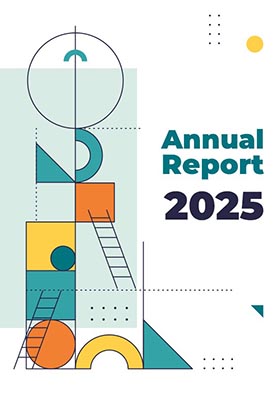On 26/5/2022, Khawla Qamhieh published a new study in Chemistry and physics of lipids journal titled Electrostatic interactions between cationic dendrimers and anionic model biomembrane. The article aimed to study the electrostatic interactions between cationic poly(amidoamine) (PAMAM) dendrimers of different generations, G3, G4, and G6, with net anionic model biomembranes by adopting an analytical model based on two dissimilar soft spheres. The results of this study demonstrated that PAMAM dendrimers was found to alter the structural properties of lipid membrane depending on the size and the charge of the dendrimers. Cationic dendrimers were found make pores in cell membrane and this effect was depending on dendrimer generation, while acetylated dendrimers were found to not make pores in the membrane (Fox et al. 2018). High generation dendrimers (>G4) can cause pore formation and strip lipids from the membranes, whereas low generation dendrimers (<G5) have been found to intercalate into the membrane or adsorb to the membrane surface. These interactions are governed by electrostatic interactions between cationic terminated dendrimers and charged membrane lipids, with charge-terminated dendrimers resulting in greater disruption to the membranes than neutral dendrimers (Fox et al. 2018). Lui et al. also confirmed that the strength of electrostatic interaction is responsible for membrane disruption, holes and the leakage of lipid bilayer (Liu and Liu, 2020). The analytical model adopted in our study proved to be good and suitable for predicting electrostatic interaction between cationic PAMAM dendrimers and anionic membrane, which is essential and strongly affects transfection of dendrimers into lipid membrane. The model could quantify the strength of electrostatic interaction, and consequently controlling the disruption of the lipid membrane by balancing between different factors effect on the interaction. Our model predicted that increasing salt concentration will reduce the attractive interaction drastically, which explains strongly reduced leakage of the lipid bilayer when 100 mM NaCl was added as observed by Lui et. al. The reduction in the attractive interaction is generation dependent as it is decreased by increasing the generation size of the dendrimer. This is consistent with the dependence of toxicity on dendrimer generation observed by Fox et al. 2018 (Fox et al. 2018), and the increment of holes density in membranes with dendrimer generation predicted by Mecke et al. (Mecke et al., 2004). Also, the model predicted that the attraction is decreased by increasing the thickness (or softness) of the membrane and the pH, which reduces the dendrimer charge. This explains why Lui et al. were able to use pH changes to control the disruption of lipid membrane by cationic nanoparticles (Liu and Liu, 2020). An increase of the temperature led to a much less pronounced increase of the electrostatic attraction than other factors. The agreement between our modelling results with these previous experimental studies verify the validity of our approach. Our simple analytical model provide a fast and convenient way of predicting and quantifying electrostatic interaction between cationic dendrimers and lipid membrane. This could be of value for evaluating different transfection systems, like dendrimers, and identify the conditions under which their interaction with lipid membrane is favorable for such a process. For more information about the study, please contact the main author at This email address is being protected from spambots. You need JavaScript enabled to view it. or the scientific research office at This email address is being protected from spambots. You need JavaScript enabled to view it.


